Packing the Living Room – Tips and Tricks
Between fragile décor, bulky furniture, and tangled electronics, packing the living room demands a strategy. One wrong move and your favorite vase could shatter, or your TV might arrive with a cracked screen. With the right approach, however, you can pack everything efficiently while keeping it safe. So, instead of rushing through the process, follow these expert tips from one of the best moving companies in Seattle and avoid common mistakes. A little planning goes a long way in making your move safer—and your living room ready to shine in its new home!
Gear Up: The Packing Supplies You Actually Need
Packing the living room without the right materials is a recipe for frustration. Instead of scrambling for random boxes and hoping for the best, gather the right tools first:
- Sturdy moving boxes in multiple sizes are a must—small ones for books, medium ones for décor, and large ones for lightweight items like pillows.
- High-quality packing tape ensures boxes stay sealed, while bubble wrap and packing paper protect fragile pieces.
- Moving blankets and furniture pads prevent scratches on large items, and zip ties keep cables from turning into a tangled mess.
- Don’t forget markers and labels—clear labeling saves time when unpacking. Consider specialty boxes for artwork, mirrors, and electronics for added protection.
If you’re short on Seattle moving boxes, check with moving companies or hardware stores for packing kits. Investing in the right materials now prevents damage and makes unpacking less chaotic. A well-stocked packing station sets the stage for a smooth move.
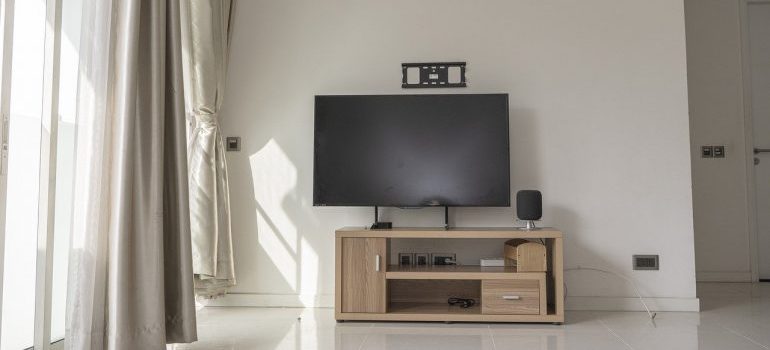
Out with the Old: Declutter Before You Pack
Packing everything without sorting first leads to wasted space and heavier loads. Instead of boxing up clutter, take time to decide what stays and what goes. Start with the easy wins—damaged or outdated décor, books you’ll never read again, or electronics collecting dust. Separate items into keep, donate, sell, and toss piles.
Furniture that won’t fit your new space? List it online or donate it. If you have outdated DVDs or knick-knacks that no longer match your style, now’s the time to let them go. The fewer items you pack, the easier your move will be. This is also a great opportunity to digitize paperwork and recycle old magazines.
Once you’ve decluttered, packing becomes more efficient, and unpacking will feel refreshing instead of overwhelming. Plus, donating gently used items helps others while lightening your load. A well-edited living room means fewer boxes and a fresh start in your new space.
Bubble Wrap or Bust: Packing Fragile Items the Right Way
Your living room likely holds delicate décor, glassware, and sentimental keepsakes. Tossing them into a box with newspaper won’t cut it. To prevent damage, wrap each fragile item individually using bubble wrap or packing paper. Glass and ceramic pieces should have a cushion at the bottom of the box, with padding between each layer.
For extra protection, place plates and frames on their sides rather than flat. If you have breakable figurines or sculptures, fill any hollow spaces with crumpled paper to absorb impact. Use dividers for glassware to prevent chipping, and make sure boxes are filled—empty spaces allow items to shift during transport.
Mark these boxes as “FRAGILE” on multiple sides, and avoid stacking heavy items on top of them. If you take the time to pack delicate pieces correctly or book HB move management assistance, you won’t have to unpack shattered memories in your new home.
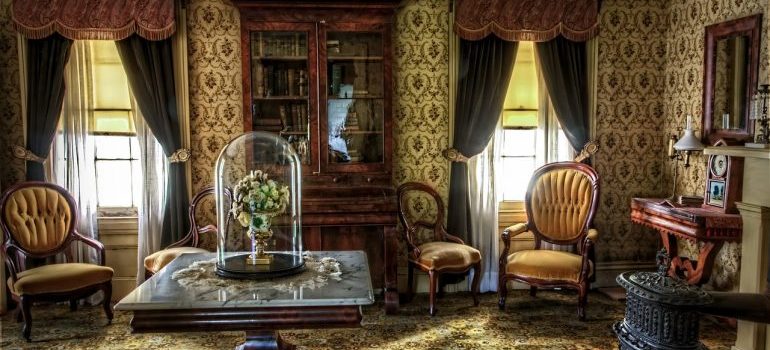
The Tech Trap: Safely Packing Electronics
Electronics are among the most expensive and fragile items in your living room. Mishandling them can lead to costly repairs or replacements. Start by backing up important files and removing batteries from remote controls and accessories. Use original boxes when possible, as they provide the best fit and protection.
If you don’t have them, wrap devices in anti-static bubble wrap and pack them in sturdy boxes with padding. Detach cables, wrap them neatly, and label them to avoid frustration when setting up your devices later. Screens need extra care—place a soft blanket or foam sheet over them and secure them with tape.
Avoid stacking anything on top of screens or gaming consoles. Keep these boxes upright and label them “FRAGILE” and “THIS SIDE UP” to prevent accidental mishandling. A little extra care ensures your electronics arrive ready to power up without a hitch.
Heavy But Handleable: Packing Books and Media
Books, DVDs, and vinyl records might seem easy to pack, but they can become unbearably heavy fast. The key is using small boxes instead of cramming them into large ones. Books should be packed upright, spine down, or stacked flat to prevent damage. For rare or delicate books, wrap them individually in paper or fabric for added protection.
Vinyl records should be kept upright to prevent warping, with padding in between. DVDs and video games are best stored in their original cases, wrapped together in a layer of packing paper. If you have a large media collection, consider using plastic bins for added durability. Finally, label these boxes clearly so they don’t get lost in the shuffle.
Furniture First: The Smart Way to Pack Sofas, Tables, and Shelves
Furniture is the heaviest and most awkward part of any living room move. Without proper preparation, pieces can get scratched, damaged, or become difficult to maneuver. Start by disassembling what you can—remove table legs, detach shelves, and take cushions off sofas. Keep screws, bolts, and small hardware in a labeled bag and secure it to the furniture piece it belongs to.
Wrap wooden furniture in moving blankets to protect against scratches. Use plastic wrap to secure drawers and prevent them from opening during transport. For upholstered items like sofas and armchairs, use furniture covers to keep them clean and free from dust or moisture. If moving a sectional sofa, separate the sections and stack them efficiently in the truck.
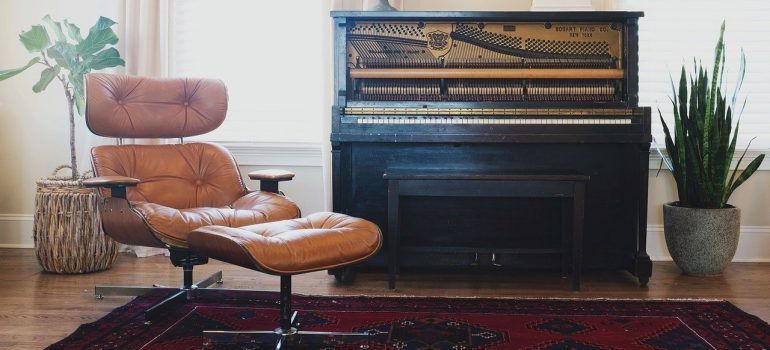
For glass coffee tables, bookshelves with glass panels, or display cabinets, wrap the glass in thick padding and secure it properly. Move glass upright rather than laying it flat to reduce the chance of breakage.
When loading the furniture onto the moving truck, position the heaviest items against the walls for stability and use straps to keep them in place, otherwise call piano movers Seattle for help. A careful approach will prevent damage and make setting up your new living room much easier.
Art and Mirrors: Protecting Fragile Pieces Like a Pro
Packing artwork, mirrors, and framed photos requires a different level of care. These items are easily cracked, scratched, or shattered if not packed properly. To prevent damage, wrap each frame or mirror in packing paper before adding a protective layer of bubble wrap.
For extra protection, place foam corner protectors on large frames. If you don’t have a specialty mirror box, use two pieces of sturdy cardboard on each side and tape them securely to keep the glass from flexing. Never stack mirrors or frames on top of each other without padding between them, as this increases the risk of breakage.
Canvas paintings should not be wrapped in plastic, as it can trap moisture. Instead, use acid-free paper and cushion them with soft packing material. Always transport framed pieces upright to prevent pressure from cracking the glass. Once packed, place artwork and mirrors in a separate section of the truck where they won’t be crushed by heavier items.
Cables, Chargers, and Gadgets: Avoiding a Tangle of Wires
One of the biggest headaches after moving with your trustworthy Washington movers is sorting through a pile of tangled cables and missing chargers. Avoid this problem by organizing everything before you pack. Start by unplugging all cables and wrapping them neatly with zip ties or Velcro straps. Label each cable so you know exactly where it belongs when it’s time to set up your devices again.
Keep chargers, remotes, and accessories in small zippered pouches or resealable plastic bags. If you have multiple gaming consoles or entertainment devices, store their cords together to avoid confusion.
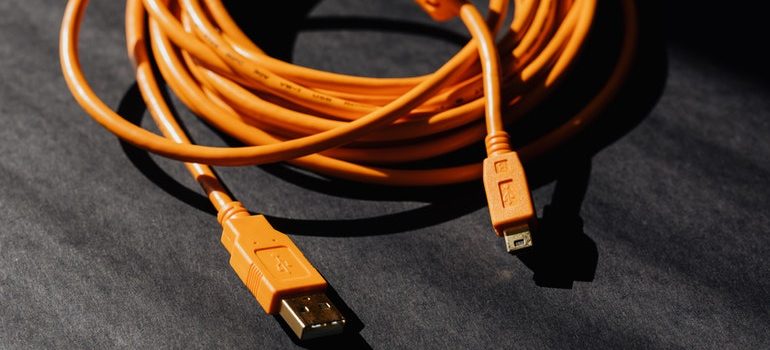
For fragile gadgets like streaming devices, smart speakers, or external hard drives, wrap them in soft packing material and place them in a separate box with padding. Avoid packing electronics near heavy items that could crush them. If you rely on certain electronics daily, such as a router or TV remote, pack them in a clearly marked essentials box for quick access.
Lamps, Décor, and Odd-Shaped Items: Packing the Unpackable
Not everything in a living room fits neatly into a box. Lamps, decorative objects, and oddly shaped items require special handling to prevent damage.
Lamps should always be disassembled before packing. Remove lampshades and bulbs, wrapping them separately to avoid cracks. The lamp base should be wrapped in bubble wrap or a moving blanket and placed in a box with soft padding around it. Lampshades should not be crushed—pack them in a box with soft items like pillows or towels for support.
Decorative objects, including vases, sculptures, and figurines, should be individually wrapped with packing paper or foam. For packing delicate art, use a double-boxing method with extra padding to absorb shock during transport.
Rugs should be rolled tightly and secured with tape or twine to keep them from unraveling. Wrap them in plastic to protect against dust and moisture. If you have a particularly delicate or valuable rug, consider placing it in a specialized moving bag. Packing the living room full of odd-shaped items indeed takes a little extra effort, but doing it correctly prevents damage and keeps your unique living room pieces in perfect condition for your new home!
The Final Touch: Last-Minute Packing and Moving Day Prep
As moving day approaches, take one last walkthrough of your living room to ensure nothing is forgotten. Check behind furniture, inside cabinets, and under cushions for small items like remote controls, coasters, or decorative pieces that may have been overlooked.
Set aside a box for essentials, including chargers, a few basic tools, and anything else you’ll need immediately after the move. If you have delicate décor or high-value items, keep them separate from the bulk of your packed belongings.
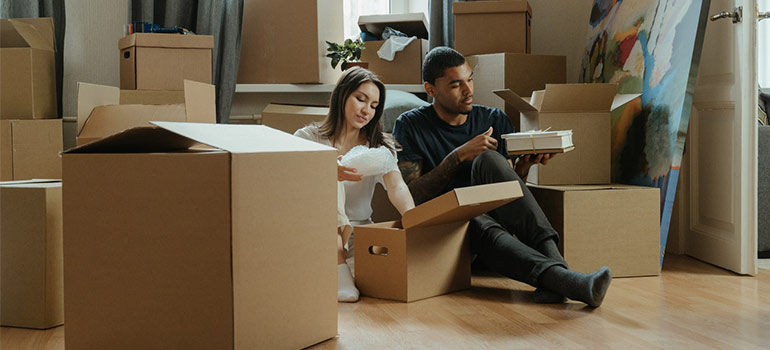
Ensure that all furniture is properly wrapped, fragile items are cushioned, and electronics are packed in their designated boxes. If you’re using movers, clearly communicate which items require extra care. If handling the move yourself, plan the truck layout so that heavy furniture is secured first, followed by boxes, and finally, fragile or high-priority items.
Doing one last check ensures that your living room is fully packed and ready for moving services in Seattle. If you stay organized and complete these last-minute tasks, you’ll make unpacking at your new home much easier and avoid any unnecessary stress on a moving day.
Packing your Living Room the Right Way
Packing your living room takes more than just throwing items into boxes. It’s about protecting everything that makes your space feel like home—your furniture, décor, electronics, and sentimental pieces. Without the right strategy, you could end up with scratched tables, tangled cords, or worse, broken glass. But when done right, packing your living room becomes an organized process that saves time, reduces stress, and ensures everything arrives safely.
When you declutter first, using the right packing materials, and handling fragile and bulky items with care, you set yourself up for a smooth move. Electronics stay protected, artwork remains intact, and your furniture is ready to be reassembled with ease. Taking the extra steps to pack efficiently means you won’t be stuck searching for missing cables or unpacking damaged décor.
Regardless if you’re moving across town or to a new city, packing the living room properly makes settling in much easier. Follow these tips, and you’ll be unpacking in no time—without surprises, frustration, or damage. Your living room deserves careful handling, and with the right strategy, it’ll feel just as welcoming in your new home as it did in the old one.
Why Choose Us
History
Hansen Bros. Moving & Storage is locally owned and operated by the same family for four generations, since 1890. We have a well-established reputation for service quality and reliability with a high percentage of repeat household and commercial clients.
Professionalism
We’re a certified ProMover by the American Moving and Storage Association with A+ rating with the Better Business Bureau, voted “Best in Western Washington” in 2009 and from 2011 to 2016 by KING5. Our company is fully licensed and insured and member of WMC and AMSA.
Value
Hansen Bros. Moving & Storage provide free, no-obligation in-home estimate and competitive rates, including low minimum rates for shipments moving under 300 miles. We’ve set a refund policy for unused packing materials and three Puget Sound locations to help clients save on travel fee costs.



